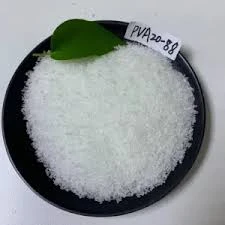Understanding Cellulose Ether HPMC
Hydroxypropyl methylcellulose (HPMC) is a prominent cellulose ether widely utilized across various industries, renowned for its versatile applications and beneficial properties. As a non-ionic, water-soluble polymer, HPMC is derived from natural cellulose through a series of chemical modifications. This modification enhances its solubility and modifies its viscosity, enabling it to serve multiple functions in a broad spectrum of applications including pharmaceuticals, food, cosmetics, and construction materials.
Understanding Cellulose Ether HPMC
The food industry also harnesses the benefits of HPMC. It acts as a thickening agent, stabilizer, and emulsifier in many processed foods. Its gelling properties can enhance the texture and mouthfeel of products, making it a popular choice in gluten-free baking, where it can help mimic the structure and chewiness of gluten-containing products. Additionally, HPMC is non-toxic and can be used in organic food products, aligning with the growing consumer demand for natural ingredients.
cellulos ether hpmc

In cosmetics and personal care products, HPMC serves multiple roles, including thickening, film-forming, and moisturizing. It is often found in lotions, creams, shampoos, and other formulations, where it helps improve texture and application. Its film-forming ability makes it an excellent choice for products requiring a long-lasting effect, such as hair styling gels and skin treatments.
The construction industry benefits from HPMC’s water retention and anti-sagging properties. It is commonly incorporated into cement-based adhesives, plasters, and paints, improving workability and extending the open time, which is crucial for proper application. HPMC also contributes to the overall performance of construction materials, enhancing their durability and strength.
The versatility of HPMC is further underscored by its environmental benefits. As a cellulose derivative, it is derived from renewable resources, making it a sustainable choice compared to synthetic polymers. Furthermore, HPMC is biodegradable, contributing to more environmentally friendly formulations.
In conclusion, HPMC is a multifaceted cellulose ether that plays a vital role in various industries. Its solubility, gelling capability, and biocompatibility render it an essential ingredient in pharmaceuticals, food, cosmetics, and construction materials. With the growing emphasis on sustainability and natural products, the relevance of HPMC is likely to continue expanding, making it a critical component in developing innovative solutions across different sectors.
-
Rdp Powder: Key Considerations for Wholesalers in the Building Materials IndustryNewsJul.08,2025
-
Key Considerations for Wholesalers: Navigating the World of Hpmc - Based ProductsNewsJul.08,2025
-
Hpmc Detergent: Key Considerations for WholesalersNewsJul.08,2025
-
Key Considerations for Wholesalers: China Hpmc For Tile Adhesive, Coating Additives, Concrete Additives, and MoreNewsJul.08,2025
-
Crucial Considerations for Wholesalers: Navigating the World of Construction MaterialsNewsJul.08,2025
-
Key Considerations for Wholesalers Sourcing Additive For Cement, Additive For Concrete, Additive For Putty from Additive Manufacturer Shijiazhuang Gaocheng District Yongfeng Cellulose Co., Ltd.NewsJul.08,2025




